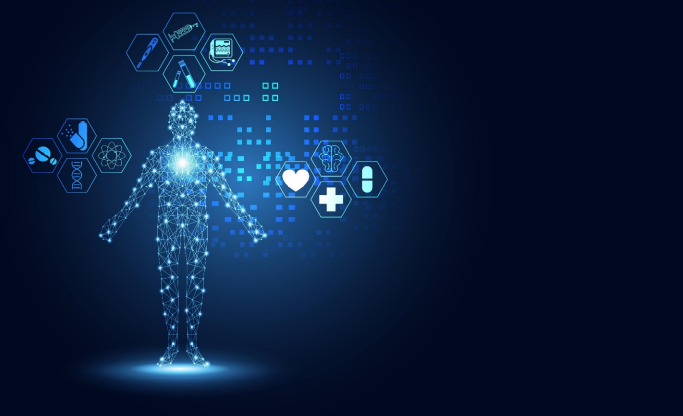The healthcare industry has been revolutionized by the advent of digital health technologies, with remote monitoring devices standing at the forefront of this transformation. These devices—ranging from wearable fitness trackers to sophisticated medical-grade tools—are changing the way patients and providers approach care. However, alongside this innovation comes a complex web of regulatory requirements that developers and healthcare stakeholders must navigate. Patrick Gora emphasizes that understanding these regulatory trends is crucial for fostering innovation while ensuring patient safety and compliance.
The Rise of Remote Monitoring Devices
Remote monitoring devices (RMDs) have experienced unprecedented growth, driven by advances in technology, the global COVID-19 pandemic, and an increased focus on personalized healthcare. Devices such as continuous glucose monitors (CGMs), cardiac monitors, and wearable ECG patches enable real-time data collection, empowering patients to manage chronic conditions while providing healthcare providers with actionable insights.
According to market research, the global remote patient monitoring market is expected to grow at a compound annual growth rate (CAGR) of over 20% through 2030. This growth is fueled by several factors, including the increasing prevalence of chronic diseases, the aging population, and a shift toward value-based care models that emphasize outcomes over services.
Key Regulatory Bodies and Frameworks
As the market expands, so does the regulatory scrutiny. Remote monitoring devices must comply with guidelines from several regulatory bodies, each with its framework:
- FDA (United States):
In the U.S., the Food and Drug Administration (FDA) classifies remote monitoring devices as medical devices if they are intended for diagnosing, treating, or preventing a medical condition. Devices are categorized into three classes based on risk, with Class I being the lowest risk and Class III requiring the highest level of oversight. The FDA has also introduced specific programs such as the Digital Health Innovation Action Plan and the Software Pre-Cert Pilot Program to streamline approval processes for digital health products. - European Medicines Agency (EMA):
In the European Union, devices must comply with the Medical Device Regulation (MDR) or In Vitro Diagnostic Regulation (IVDR), depending on their intended use. These regulations emphasize risk classification, clinical evaluation, and post-market surveillance to ensure safety and efficacy. - Other Global Standards:
Countries like Canada, Japan, and Australia have their unique regulatory pathways for digital health products. Additionally, global standards organizations, such as the International Organization for Standardization (ISO), provide guidelines for safety, risk management, and interoperability.
Key Trends in Regulatory Landscape
1. Emphasis on Software as a Medical Device (SaMD)
The rise of software-driven devices has prompted regulators to establish clearer guidelines for Software as a Medical Device (SaMD). These are stand-alone software solutions used for medical purposes, often integrated into remote monitoring devices. The FDA’s guidance on SaMD includes a risk-based framework for pre-market submissions, emphasizing cybersecurity, data integrity, and usability.
2. Increased Focus on Cybersecurity
With the rise of connected devices, the risk of cybersecurity breaches has grown. Regulators now demand robust security measures to protect patient data and device functionality. For example, the FDA requires device manufacturers to submit a Cybersecurity Bill of Materials (CBOM) detailing the software and hardware components used, as well as potential vulnerabilities.
3. Interoperability Standards
To maximize the utility of remote monitoring devices, regulators are prioritizing interoperability. Standards such as Health Level Seven (HL7) and Fast Healthcare Interoperability Resources (FHIR) facilitate seamless data exchange between devices, electronic health records (EHRs), and healthcare providers.
4. Real-World Evidence (RWE) and Post-Market Surveillance
Regulatory agencies increasingly rely on real-world evidence to evaluate device safety and effectiveness. Continuous post-market surveillance allows manufacturers to address issues proactively, ensuring devices meet evolving safety standards.
Challenges Faced by Manufacturers
While the regulatory landscape is evolving to support innovation, manufacturers of remote monitoring devices face several challenges:
- Navigating Global Regulations:
Compliance with multiple regulatory frameworks can be resource-intensive, especially for companies operating in international markets. - Balancing Innovation and Compliance:
Striking a balance between rapid innovation and stringent regulatory requirements is a constant challenge. Early engagement with regulators can help mitigate these hurdles. - Data Privacy and Protection:
Adhering to data privacy laws, such as the General Data Protection Regulation (GDPR) in the EU or the Health Insurance Portability and Accountability Act (HIPAA) in the U.S., adds another layer of complexity. - Demonstrating Clinical Evidence:
Manufacturers must invest in robust clinical trials and data collection to demonstrate device efficacy, which can be costly and time-consuming.
The Role of Artificial Intelligence in Regulatory Compliance
Artificial intelligence (AI) is playing an increasing role in both the development and regulation of remote monitoring devices. AI-powered tools can assist in predicting device performance, optimizing clinical trials, and enhancing cybersecurity protocols. However, AI also introduces new regulatory challenges, such as ensuring algorithm transparency and mitigating bias.
Future Directions
As digital health continues to evolve, the regulatory environment will need to adapt to new technologies and use cases. Future developments may include:
- Harmonization of Global Standards: Efforts are underway to streamline international regulatory requirements, reducing duplication and accelerating market entry.
- Expansion of Regulatory Sandboxes: These controlled environments allow companies to test innovative products under regulatory supervision, fostering innovation while ensuring safety.
- Enhanced Focus on Patient-Centric Design: Regulators are emphasizing user-friendly interfaces and accessibility, ensuring that devices meet the needs of diverse patient populations.
The rapid growth of remote monitoring devices represents a significant opportunity to transform healthcare delivery. However, navigating the regulatory landscape is essential for ensuring these innovations are safe, effective, and accessible. By staying informed about regulatory trends, manufacturers, healthcare providers, and patients can unlock the full potential of digital health technologies while maintaining compliance and building trust in the industry.
